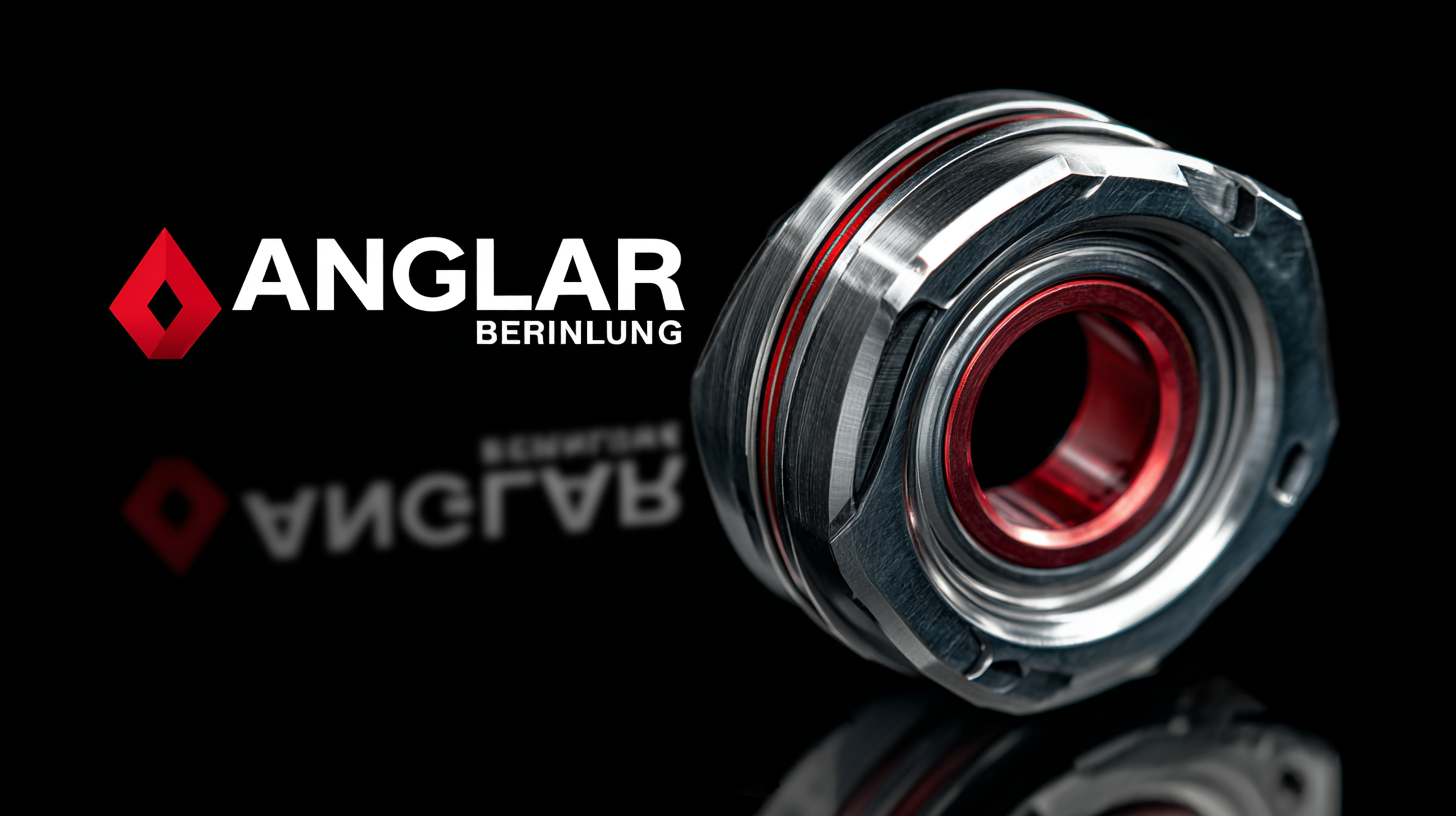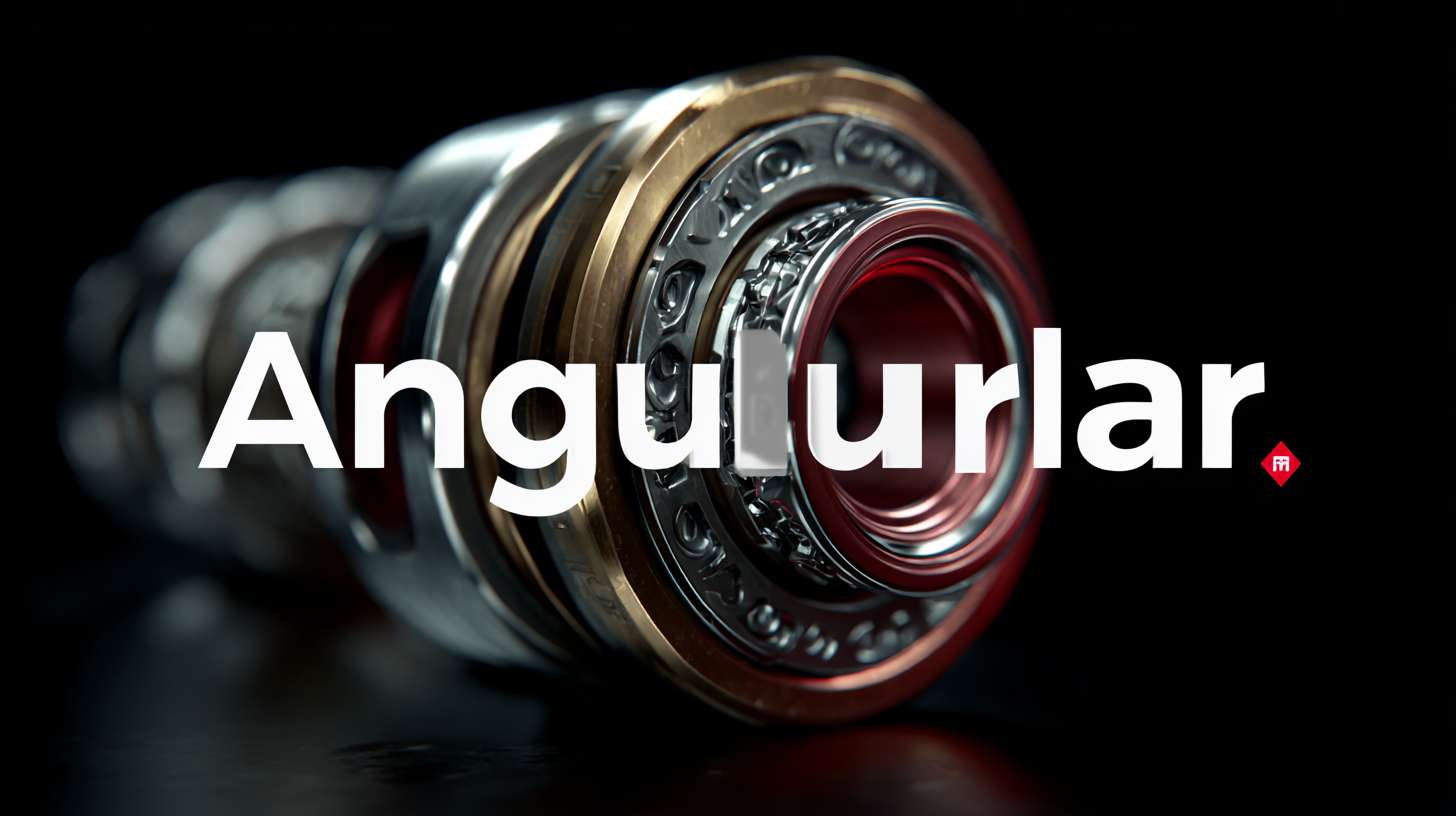Navigating the 2025 Tech Landscape: Innovative Strategies for Sourcing the Best Angular Bearings
As we approach the dynamic tech landscape of 2025, understanding the intricacies of Angular Bearings and sourcing the best options has become paramount for industries reliant on advanced engineering solutions. According to a report by MarketsandMarkets, the global bearing market is anticipated to reach $90.86 billion by 2025, with angular contact bearings playing a crucial role due to their versatility and efficiency in accommodating both radial and axial loads. With innovations continuously reshaping the marketplace, it is essential for companies to adopt innovative strategies that not only enhance performance but also optimize sourcing processes. This blog will delve into effective tactics for identifying and procuring the highest quality Angular Bearings to stay competitive in the evolving technological ecosystem.
Understanding Import and Export Certifications for Angular Bearings in 2025
In navigating the complexities of sourcing angular bearings in 2025, it's imperative to grasp the nuances of import and export certifications that govern these products. With increasing globalization, having the right certifications not only ensures compliance with international standards but also enhances credibility with suppliers and customers alike. Familiarizing yourself with certifications related to quality assurance, safety, and environmental impact will be key in establishing a reliable supply chain.
When sourcing angular bearings, prioritize partnerships with suppliers who possess the necessary certifications. This will reinforce product reliability and minimize risks associated with non-compliance. Additionally, maintaining transparency in your supply chain will further facilitate smoother import/export processes, ensuring that all documentation is accurate and up-to-date.
Tip: Always conduct thorough research on the regulatory requirements specific to the countries you are dealing with. Stay informed about any updates or changes in trade policies that might affect your sourcing strategy. Building a network with industry experts can also provide valuable insights into best practices and potential pitfalls in the certification process for angular bearings.

Key Innovations in Angular Bearing Technology for Competitive Sourcing
In the rapidly evolving landscape of manufacturing and engineering, the advancements in
angular bearing technology have carved out crucial pathways for companies aiming to enhance performance while optimizing resource allocation. One of the significant innovations is the incorporation of advanced materials such as hybrid ceramics and high-performance polymers, which not only reduce friction but also increase the lifespan of bearings considerably. These materials offer superior resistance to wear and heat, making them ideal for high-load applications in various industries, including automotive and aerospace.

Additionally, the integration of smart technology into angular bearings presents another frontier in competitive sourcing. Bearings equipped with IoT sensors can provide real-time data on performance metrics such as load, temperature, and vibration. By leveraging this information, manufacturers can implement predictive maintenance strategies, reducing downtime and preventing costly failures. Furthermore, enhanced manufacturing processes, such as additive manufacturing, allow for bespoke bearing designs tailored to specific operational needs, further pushing the boundaries of what is achievable in terms of efficiency and reliability. Embracing these key innovations will undoubtedly provide companies with a distinct competitive edge in sourcing the best angular bearings.
Step-by-Step Guide to Navigating Certification Processes for Importing Bearings
When venturing into the importation of angular bearings, it is crucial to understand the certification processes involved.
The first step is to familiarize yourself with specific regulations governing the classification of materials, particularly those associated with iron and steel, as these frequently include bearings.
Accurate classification under relevant chapters, such as Chapter 72, is essential to ensure compliance with international trade laws and avoid potential penalties.
Once classification is established, you must navigate the required documentation and registration processes.
For example, all medical devices, including those used in bearing-related applications, must be registered with relevant authorities before entering the market.
This step ensures that the products meet necessary safety and quality standards.
Understanding the intricacies of these certification processes will streamline the path from sourcing to compliance, ultimately enhancing your business strategy in a competitive tech landscape.
Strategies for Collaborating with Global Suppliers in the Angular Bearings Market
In the competitive landscape of the angular bearings market, collaborating with global suppliers is essential for companies aiming to source the best products while optimizing costs and quality. Building strong relationships with suppliers across different regions allows businesses to leverage diverse expertise and technological advancements. Establishing clear communication channels and mutual trust is foundational, as it empowers both parties to navigate challenges effectively and stay aligned on goals. Regular check-ins and updates can help to preempt potential issues, ensuring a smoother procurement process.
Moreover, understanding the cultural nuances and market dynamics of suppliers' regions enhances collaboration. By investing time in learning about their practices, timelines, and expectations, companies can tailor their sourcing strategies to be more effective. Utilizing digital tools to facilitate collaboration can also streamline processes, allowing for real-time updates and feedback. This adaptability not only fosters stronger partnerships but also enables companies to respond swiftly to market changes and customer demands, positioning them better in the ever-evolving tech landscape of 2025.
Evaluating Quality Standards and Compliance for Angular Bearings in Trade Transactions
In navigating the complex landscape of sourcing angular bearings, it is imperative to prioritize quality standards and compliance within trade transactions. As businesses increasingly engage in global trade, the need for rigorous quality assessments has never been more critical. This includes understanding the compliance frameworks that not only uphold quality but also ensure adherence to international trade regulations. Today’s market demands that businesses remain vigilant, particularly when integrating disruptive technologies that enhance operational efficiency while maintaining transparency and integrity in their dealings.
Furthermore, the role of established compliance programs can guide traders in aligning their practices with international standards. For instance, gaining insights into emerging compliance requirements, such as those related to transaction monitoring and security protocols, helps companies mitigate risks associated with non-compliance. As stakeholders look to enhance their supply chains, it is essential to integrate these considerations into every sourcing decision made, ensuring that all technical specifications and legal obligations are met. This proactive approach not only reinforces the quality of the angular bearings sourced but also solidifies the reputation of businesses in the global market.
Navigating the 2025 Tech Landscape: Innovative Strategies for Sourcing the Best Angular Bearings
| Material Type |
Quality Standard |
Compliance Certification |
Load Rating (kN) |
Operating Temperature (°C) |
Sourcing Strategy |
| Steel |
ISO 9001 |
CE Mark |
15 |
-20 to 100 |
Direct procurement from manufacturers |
| Ceramic |
API Spec 7-1 |
ISO 14001 |
10 |
-50 to 150 |
Long-term contracts with suppliers |
| Plastic |
ASTM D3273 |
RoHS Compliance |
5 |
-10 to 120 |
Market-based sourcing |
| Bronze |
DIN 1494 |
ISO 9001 |
12 |
-20 to 80 |
Joint ventures with local producers |

Home
Products
Industrial Bearings
Deep Groove Ball Bearings
Self-Aligning Ball Bearings
Angular Contact Ball Bearings
Cylindrical Roller Bearings
Taper Roller Bearings
Spherical Roller Bearings
Bearing housing or Accessories
Miniature Bearing
Thrust ball bearing
Radial Spherical Plain Bearing
Pillow Block Bearing
Needle Roller Bearings
Automotive Bearings
Agricultural Bearings
Special Material Bearings
Industry Application
About Us
News
Contact Us





